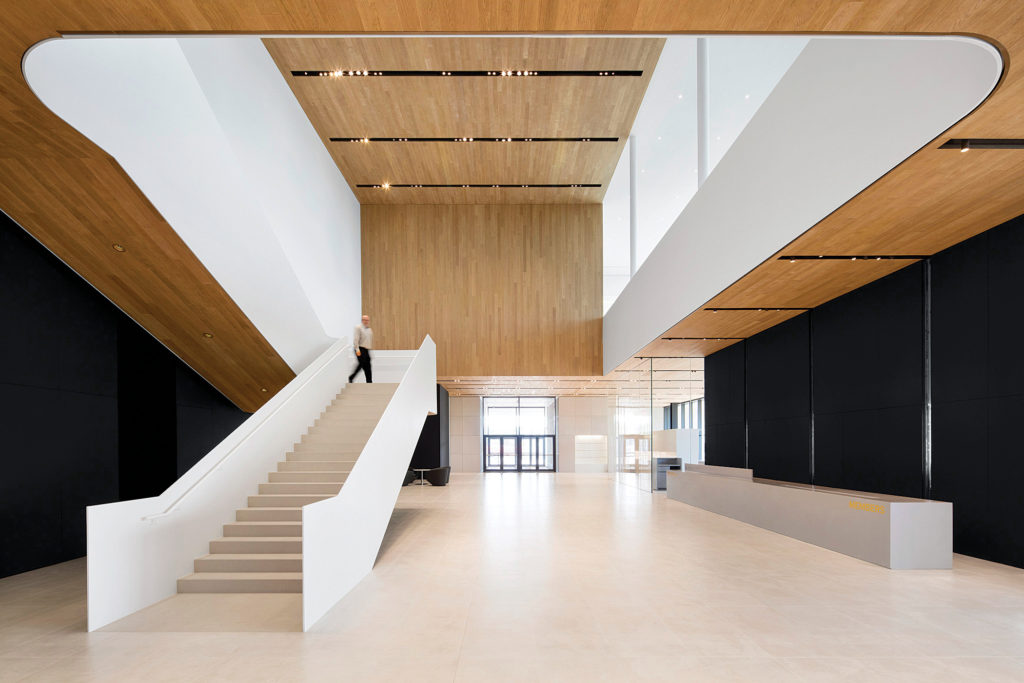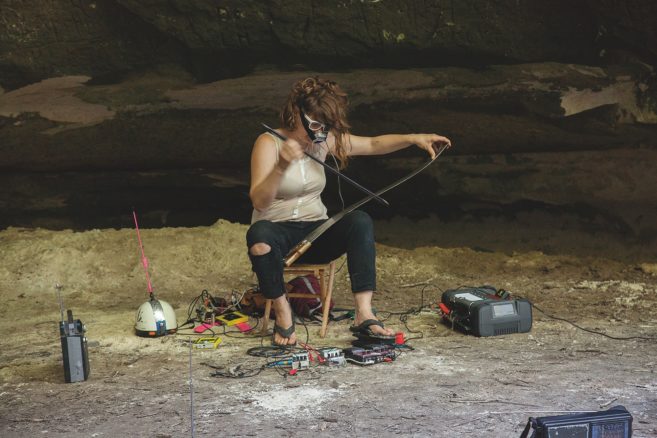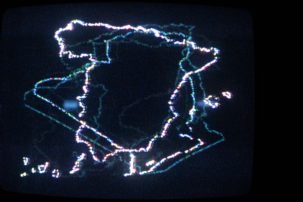As featured in the New York Times’s “52 Places to Go in 2018,” the Bruce Kuwabara–designed Remai Modern (102 Spadina Cres. E.) is a must-see. “The facility is world class and it’s the first time that we’re really seeing international, national and regional practices shown in the same context,” says artist Tammi Campbell.
The Remai sits on the banks of the South Saskatchewan River, with its ambling green space and waterfront trails, and is a quick walk from the popular Riversdale neighbourhood. “Our city is small, but now it feels walkable and accessible,” Campbell adds.
In Riversdale, be sure to visit the Red Shift Gallery (118 20th St. W.), a contemporary Indigenous art space, and artist-run centres AKA Artist-Run and Paved Arts (424 20th St. W.), which are both committed to community-centred programming. Also check for programming by Tribe Inc. (601 Spadina Cres. E.), an Indigenous artist-run centre that operates nomadically and collaborates with other local arts organizations.
Creative Commons YXE (312 Ave. B S.) hosts a full printmaking studio where member artists have access to facilities and participate in art nights and concerts. Remai Modern curator Rose Bouthillier suggests the commercial gallery Art Placement (238 3rd Ave. S.), which was originally run by artists and “has been historically significant in terms of supporting artists’ careers.”
Bridges Art Movement (BAM), Bouthillier notes, is an itinerant collective of “seven emerging artists who are active in the scene in different ways.” Not to be missed, she concludes, “are the exciting things happening at the College Art Galleries (107 Administration Pl.),” which shares space with the Kenderdine Art Gallery at the University of Saskatchewan. Also on campus, find the Gordon Snelgrove Gallery (3 Campus Dr.).
Wanuskewin Heritage Park is another key site, with two galleries specifically designated for contemporary Indigenous artists and art programming. “Wanuskewin is the longest-running archeology site in Canada,” says curator Felicia Gay. “It was utilized by many different groups of the Northern Plains over a period of 6,000 years.”
Wanuskewin also has artist-in-residence programs. “One thing about Saskatoon is there’s a very strong arts community here,” says Gay. “In terms of the Indigenous arts community, I think that it goes in waves, and right now there seems to be a resurgence.”
Regarding everyday food and drink: “A lot of the core neighbourhoods don’t have grocery stores,” explains AKA executive director Tarin Dehod, “so you have to take transit, drive or use Giant Tiger.”
Luckily, Bouthillier says, “Saskatoon has an amazing restaurant scene.” Sushiro (737B 10th St. E.) is a much-loved sushi spot. Celebrity chef Dale MacKay returned to his hometown and helped open several restaurants, including Little Grouse on the Prairie (167 3rd Ave. S.) and Sticks and Stones (226 2nd Ave. S.).
Chefs Christie Peters and Kyle Michael operate The Hollows (334 Ave. C S.) and Primal (423 20th St. W.). Also worth a visit is The Night Oven Bakery (629 1st Ave. N.); “Everything they do is in a wood-fired oven, and they mill their own grain to make flour from local organic sources,” says AKA gallery/outreach coordinator Derek Sandbeck. The non-profit cooperative Saskatoon Farmers’ Market (414 Ave. B S.), meanwhile, is “like a community-gathering space.”
This article is adapted from Site-Specific Regina | Saskatoon, a special section in the Spring 2018 issue of Canadian Art.

 The lobby of the Remai Modern, 2017. Photo: Adrien Williams.
The lobby of the Remai Modern, 2017. Photo: Adrien Williams.







